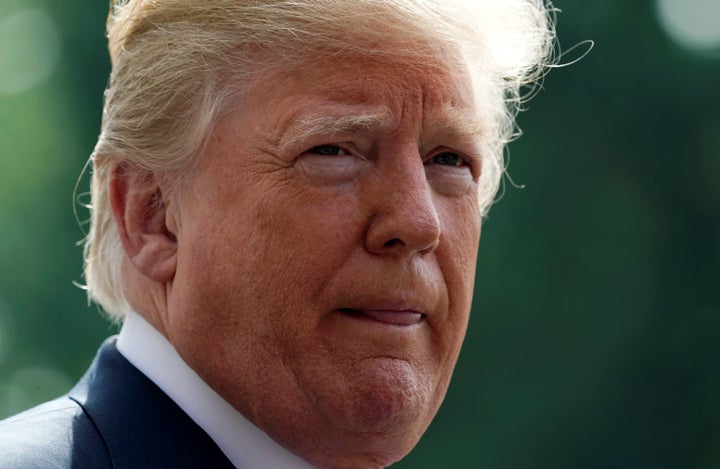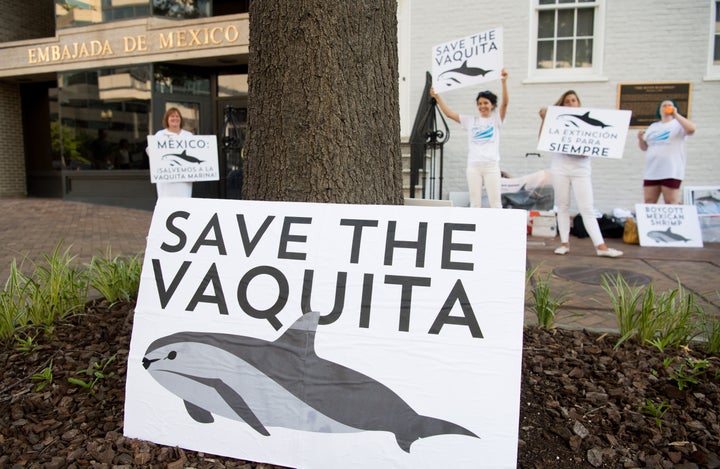
The Trump administration suffered seven major environmental setbacks in the past week as mounting losses in federal courts stall its ambitious deregulatory agenda.
On Friday morning, the U.S. Court of Appeals for the District of Columbia Circuit ruled against the Environmental Protection Agency’s June 2017 decision to delay Obama-era safety standards for chemical plants, arguing the “action was arbitrary and capricious.”
On Thursday, the U.S. District Court in South Carolina issued a nationwide injunction against the EPA’s delay of the 2015 Water of the U.S. rule, which extended federal safeguards to 2 million miles of streams and 20 million acres of wetlands, securing the drinking water of more than 117 million Americans. Former EPA Administrator Scott Pruitt, who resigned in disgrace last month amid mounting ethical scandals, said in June that he planned to unveil a proposal to replace the rule.
But Judge David Norton said the decision to delay the rule until 2020 ― allowing 26 states to opt out of the regulation ― violated rule-making procedures under the Administrative Procedure Act, or APA.
“As administrations change, so do regulatory priorities,” Norton, a George H.W. Bush appointee, said in his ruling. “But the requirements of the APA remain the same. The court finds that the government failed to comply with these requirements.”
That same day, the U.S. District Court in Fresno, California, overruled the Fish and Wildlife Service’s objection to considering evidence that shows proposed mitigation for the $15 billion “WaterFix” tunnel project under the San Francisco Bay Delta fails to protect endangered fish.
On Wednesday, U.S. District Judge Brian Morris in Montana ordered the State Department to complete an additional environmental review of TransCanada’s Keystone XL pipeline, effectively halting the administration’s attempt to railroad the controversial tar sands project.

In a 13-page ruling, the judge declined to vacate President Donald Trump’s permit allowing Keystone XL to move forward, which reversed Barack Obama’s 2015 decision to reject the pipeline. But he said the federal government had an “obligation to analyze new information relevant to the environmental impacts of its decision.”
On Tuesday, the U.S. Court of International Trade affirmed an immediate embargo on seafood from Mexico caught with gillnets, a fishing method blamed for killing so many endangered vaquitas that as few as 15 of the porpoises remain. The decision ruled against a challenge from the departments of Commerce, Treasury and Homeland Security to a similar order in July.
“Federal courts across the nation are sending the Trump administration a pretty straightforward message: Stop breaking the law,” Michael Wall, the litigation coordinator at the Natural Resources Defense Council, said in an email.
Last Thursday, the U.S. Court of Appeals for the 9th Circuit ruled in a 2-to-1 decision that the EPA offered “no defense” of its decision to delay a ban on chlorpyrifos, a widely used pesticide that’s been linked to learning disabilities in children. Pruitt reversed plans to ban the chemical in one of his first and most widely reviled decisions in March 2017.
That same day, the U.S. District Court in Los Angeles ordered the EPA to ban or regulate stormwater discharges from commercial and industrial sites, in a precedent-setting interpretation of the Clean Water Act.
The spate of decisions adds to a string of losses for the Trump administration, particularly at the EPA.
Last month, the D.C. Circuit temporarily blocked the EPA’s decision to lift a limit on the number of “super-polluting” remanufactured semi trucks that could be sold ― a move seen as Pruitt’s parting shot hours before leaving the agency. New EPA chief Andrew Wheeler reversed course a week later after 16 state attorneys general sued to permanently overturn the decision.
In March, the U.S. District Court in Oakland, California, ruled that the EPA violated the APA when it delayed an Obama-era rule to tighten training requirements for farmworkers applying toxic pesticides.
“Federal courts across the nation are sending the Trump administration a pretty straightforward message: Stop breaking the law.”
- Michael Wall, NRDC litigation coordinator
In July 2017, the D.C. Circuit blocked the EPA’s decision to suspend an Obama-era rule to restrict methane emissions from new oil and gas wells.
“The malice with which the Trump administration is attempting to gut environmental protections is rivaled only by its frequent incompetence, a product of ignoring the clear requirements of the law,” Pat Gallagher, the Sierra Club’s legal director, said Friday in an email. “It’s long past time for the Trump administration to start enforcing and strengthening our toxics, clean air and water laws, rather than trying to tear them down and getting swatted down by judges appointed by both Republican and Democratic administrations.”
In an email to HuffPost on Friday, the EPA said “there are wins and losses in each administration.”
“The law is clear that we are entitled to change regulations based on a shift in policy direction,” Michael Abboud, an EPA spokesman, said in an email. “We intend to continue to do that while respecting the rule of law and the role of the courts.”
The president’s tightening grip over the courts could also help reverse the tide. In July, Trump signed an executive order giving agency heads greater discretion over the selection of the roughly 2,000 administrative law judges employed in-house by federal departments.
By the end of last year, he appointed four times as many federal judges in his first year as Obama. By last month, Trump’s tally of appointees rose to 44 since taking office ― more appellate judges than any president in American history at this point in his tenure, according to the Boston Globe ― with another 88 nominees pending before the Senate.
The Senate now seems poised to confirm ultraconservative Brett Kavanaugh to the Supreme Court, making him Trump’s second selected justice and reshaping the high court for a generation.
The story has been updated with comment from the EPA.
